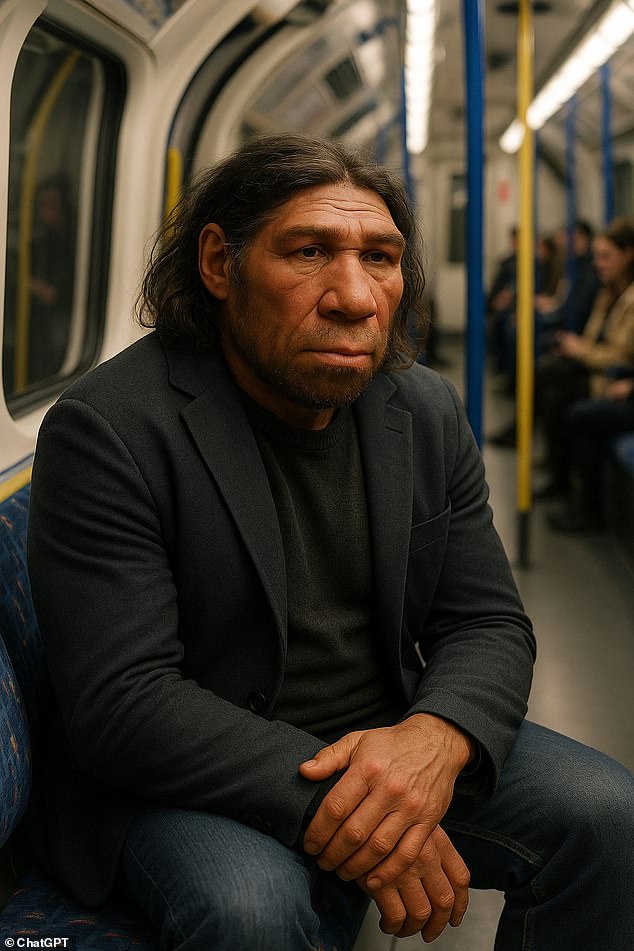
Reimagining Neanderthals and Denisovans: Scientists Unveil Their Potential Modern-Day Appearance
What If Neanderthals and Denisovans Hadn’t Gone Extinct?
For 40,000 years, Homo sapiens have been Earth’s sole human species. But what if our ancient cousins—Neanderthals and Denisovans—had survived? Experts suggest they might not look vastly different from us today, though adapting to modern society could pose challenges.
[Image: AI-generated impression of a Neanderthal wearing modern clothing, highlighting their robust build and prominent brow ridge.]
Physical Traits: Not So Different
Neanderthals, who diverged from humans around 400,000 years ago, were stockier with shorter legs, wider hips, and larger skulls than modern humans. They had muscular builds, heavy brows, and small foreheads. Denisovans, whose remains are scarcer, likely shared similar robust features. A recently identified Denisovan skull suggests broad faces, large noses, and powerful frames.
Dr. John Hawks (University of Wisconsin-Madison) notes most Neanderthal traits overlap with modern human variation. “You wouldn’t mistake them on the street, but they’d still be recognizably human,” he says. Skin tones would vary based on geography, just like today.
[Image: Reconstruction of a Neanderthal man from the Neanderthal Museum, Germany, juxtaposed with a modern human.]
Genetic Merging: A Blended Future
Interbreeding was common when these species coexisted. Today, non-African populations carry 1-4% Neanderthal DNA, while some Asians retain Denisovan genes aiding high-altitude survival. If extinction hadn’t occurred, mixing would likely intensify.
“They never truly vanished—we merged!” says Dr. Hugo Zeberg (Karolinska Institutet). Larger Homo sapiens populations diluted Neanderthal/Denisovan genes historically, but ongoing contact could boost their genetic presence. Hybrid offspring might blend traits like larger heads (Neanderthal) with slimmer builds (human).
[Image: Diagram comparing Neanderthal, Denisovan, and human skulls.]
Social Challenges: Out of Sync?
Neanderthals lived in small, isolated groups, lacking the hyper-social networks of humans. Dr. April Noel (University of Victoria) suggests they’d struggle in today’s fast-paced, collaborative world. Genetically, they may have had lower cognitive flexibility and limited language processing—traits at odds with modern workplaces or social media.
Dr. Penny Spikins (University of York) adds Neanderthals’ independence might make them less “herd-driven,” possibly resisting trends or misinformation. Yet their tighter-knit communities could foster stronger local bonds.
[Image: AI depiction of Neanderthals in a modern city, appearing isolated amid crowds.]
A Different World?
Without extinction, human history might look radically different. Domestication (e.g., pets, livestock) and large-scale agriculture—hallmarks of Homo sapiens—might not exist, as Neanderthals showed no signs of taming animals. Environmental exploitation and climate change could also be less severe, as their smaller, decentralized groups had lighter ecological footprints.
However, coexistence could spark conflict. Human history’s pattern of intergroup violence might extend to these cousins, notes Dr. Spikins. Conversely, their survival might enrich cultural diversity, offering alternative ways of living.
[Image: Contrast of a modern metropolis with a Neanderthal forest settlement.]
Legacy in Our Genes
While speculative, this “what-if” highlights our shared ancestry. As Dr. Bence Viola (University of Toronto) states: “They’d have become part of us.” Neanderthals and Denisovans remind us that humanity’s story is one of adaptation—and perhaps, unity.
(Word count: ~600)


